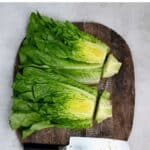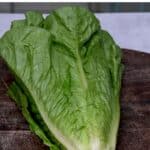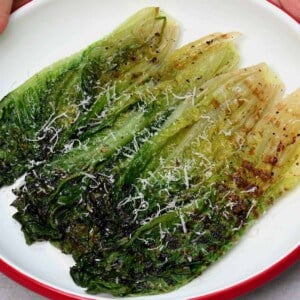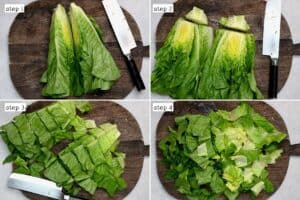This post may contain affiliate links. Please read our disclosure policy.
The ultimate guide to romaine lettuce: including how to chop, use, and store romaine lettuce ready to use in salads, burgers, and more!
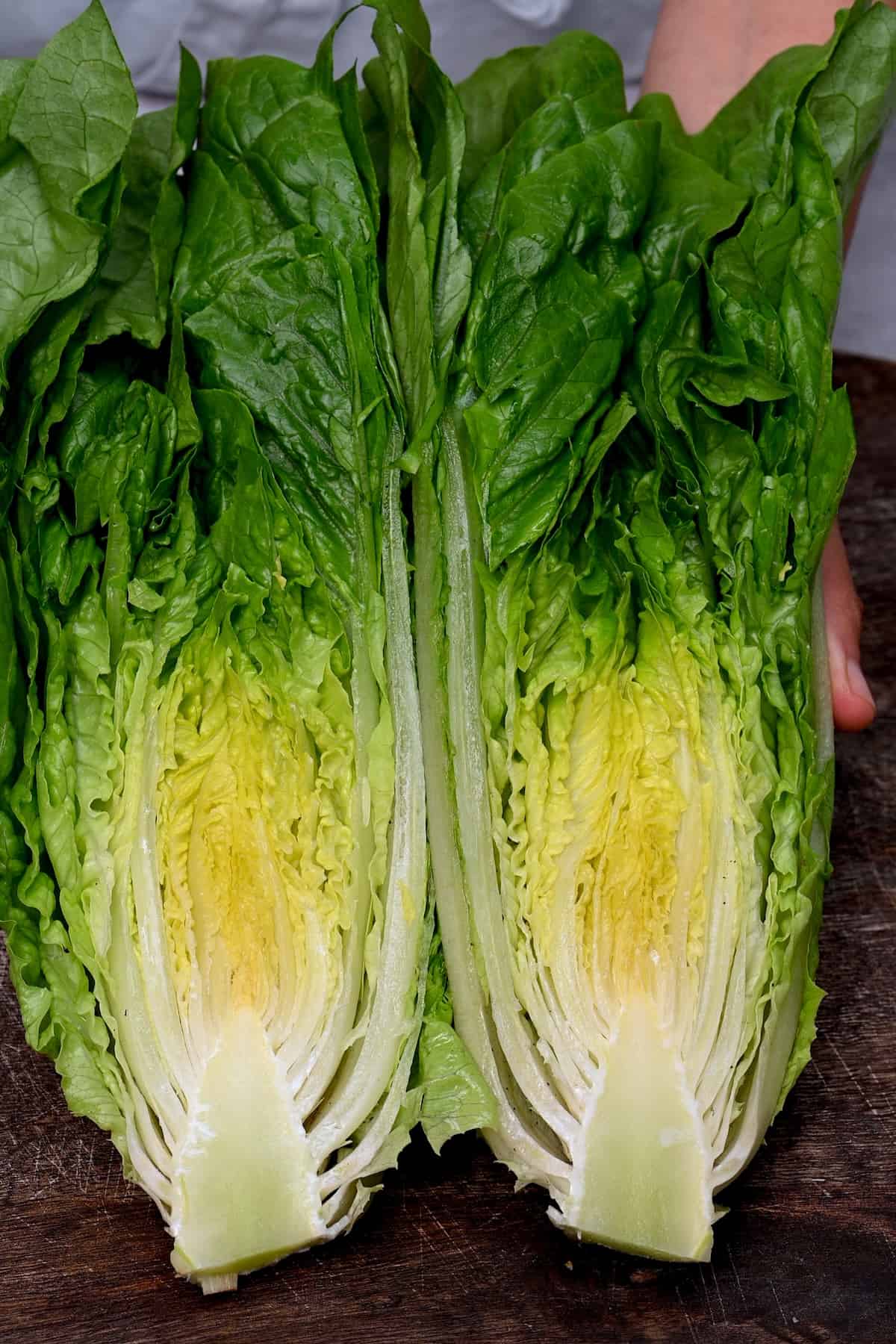
What’s in This Post
What is Romaine lettuce?
Romaine lettuce (also called “cos lettuce”) is a variety of lettuce that grows long/tall rather than round. It has crisp and sturdy leaves with firm ribs running through their center (beginning dark green on the outside and light green and super crunchy in the middle), with a neutral (sometimes slightly bitter) flavor.
Its crunchy sturdiness makes it a popular salad option, like Caesar salad, as it holds up well to being combined with dressings and toppings, adding a wonderfully fresh and crisp texture to any dish. It’s also a popular addition to burgers, sandwiches, and wraps.
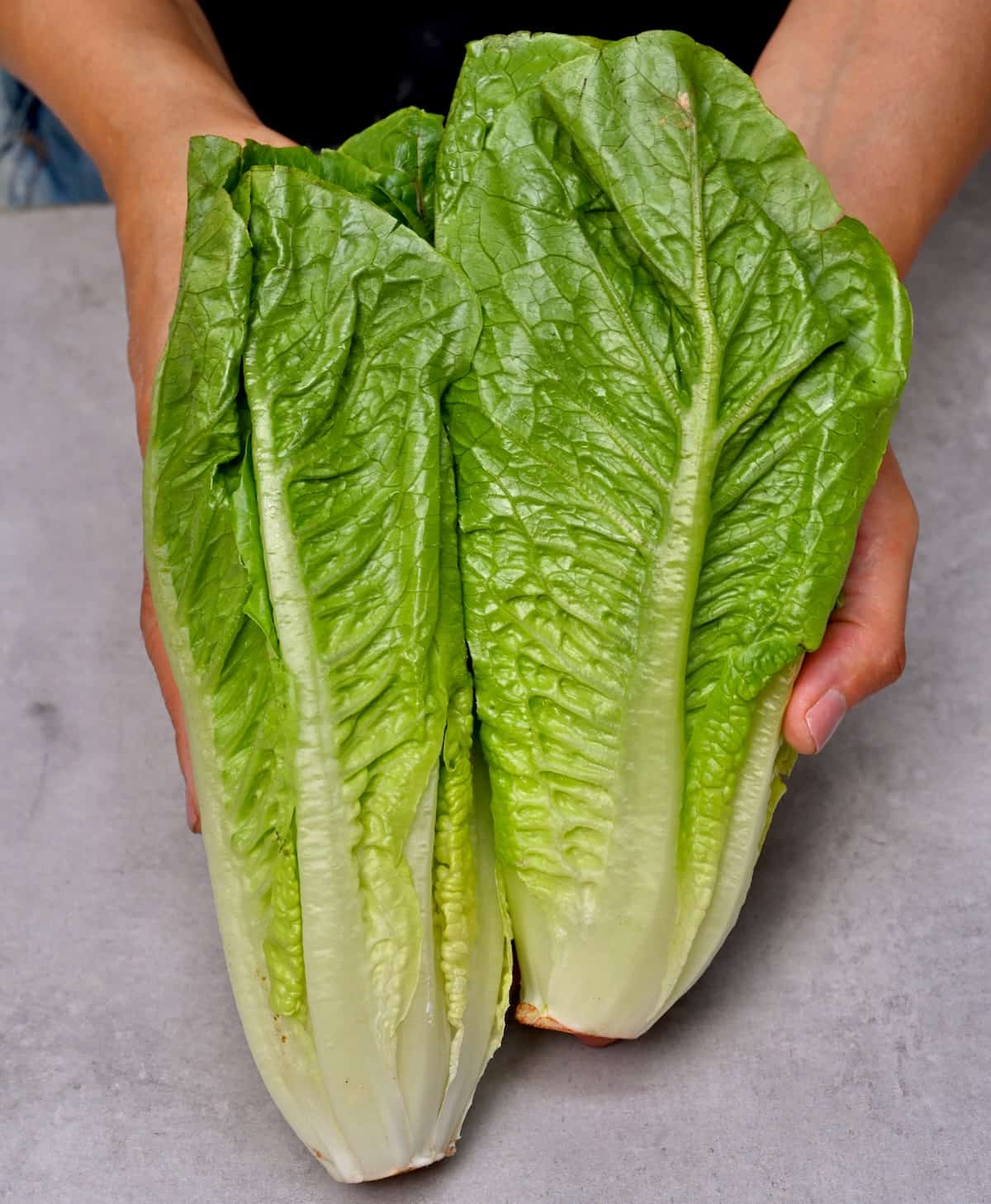
Benefits of Romaine lettuce
Romaine lettuce is a low-calorie (about 8 kcal per cup), high-fiber vegetable and a rich source of several vitamins and minerals:
- Vitamin A: Made from beta-carotene, a type of antioxidant. This vital nutrient is important for cell growth, reproductive health, and maintaining a healthy heart, kidneys, lungs, and eyes.
- Vitamin K: Is important for blood clotting and bone and heart health.
- Vitamin C: Is especially important for maintaining our immune systems while helping keep teeth and bones strong.
- Along with smaller amounts of folate, potassium, calcium, and iron.
It also contains no fat, cholesterol, or sodium and is a good source of hydration, thanks to its high water content.
How to cut Romaine lettuce
There are a couple of main ways to cut romaine lettuce, including simply using a knife to cut strips (across) from the top to the bottom of the lettuce head in your desired thickness.
OR
- First, slice the romaine in half lengthwise.
- Then, turn the halves cut-side-up and remove the tough core using a V-shaped cut.
- Then, either slice across to create long strips OR slice down, lengthwise, through the lettuce to divide it into thirds or quarters first, then slice it across, as thin or thick as you’d like.
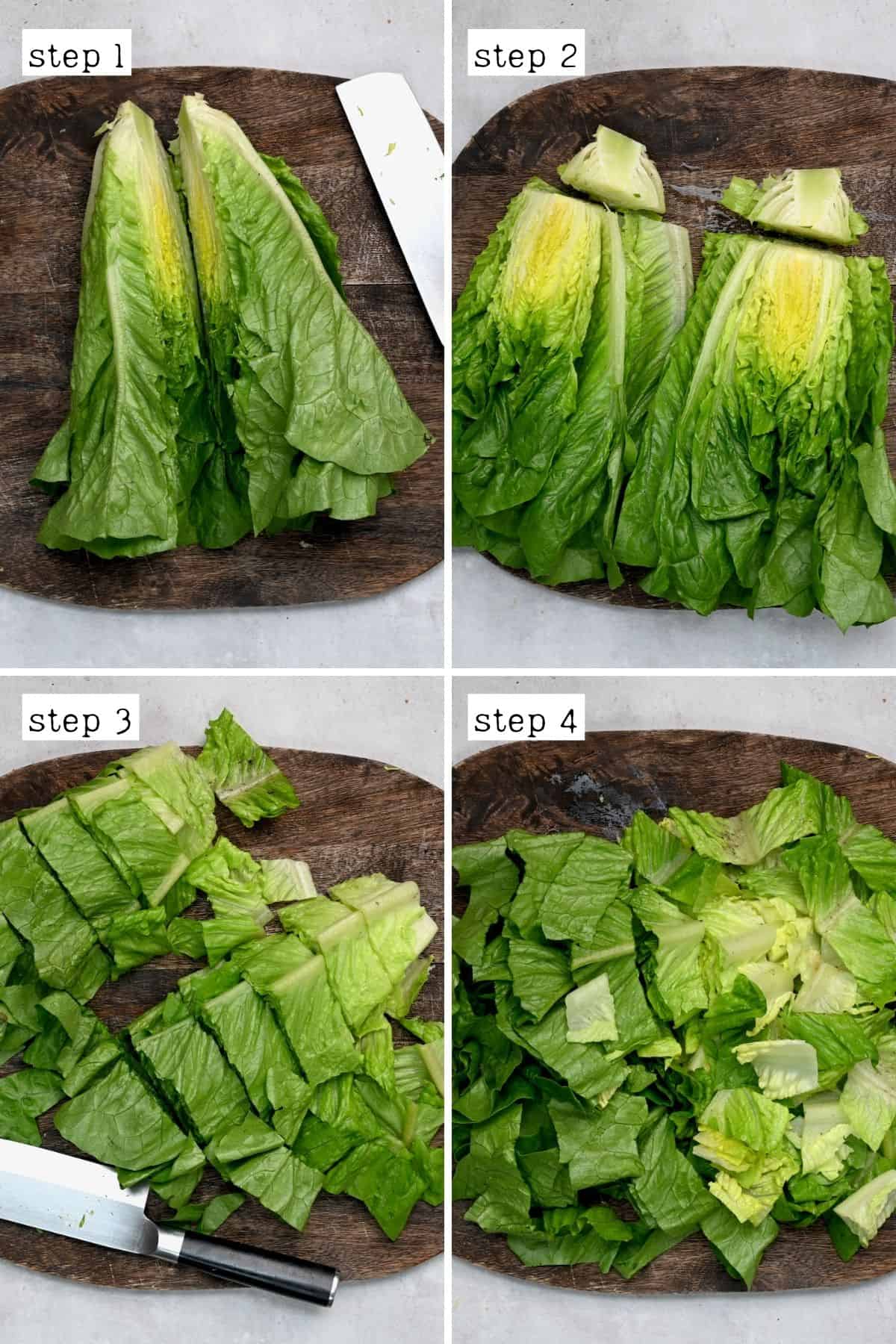
How do you wash Romaine lettuce properly?
I prefer to cut the lettuce first, then place it in a large bowl of water to swish around (any grit will fall to the bottom). Alternatively, place it in a colander under running water and swish.
Then drain the lettuce well and pat it dry (or use a salad spinner). This is the easiest way to wash between all the leaves, rather than attempting to clean between each leaf when it’s still an intact lettuce head.
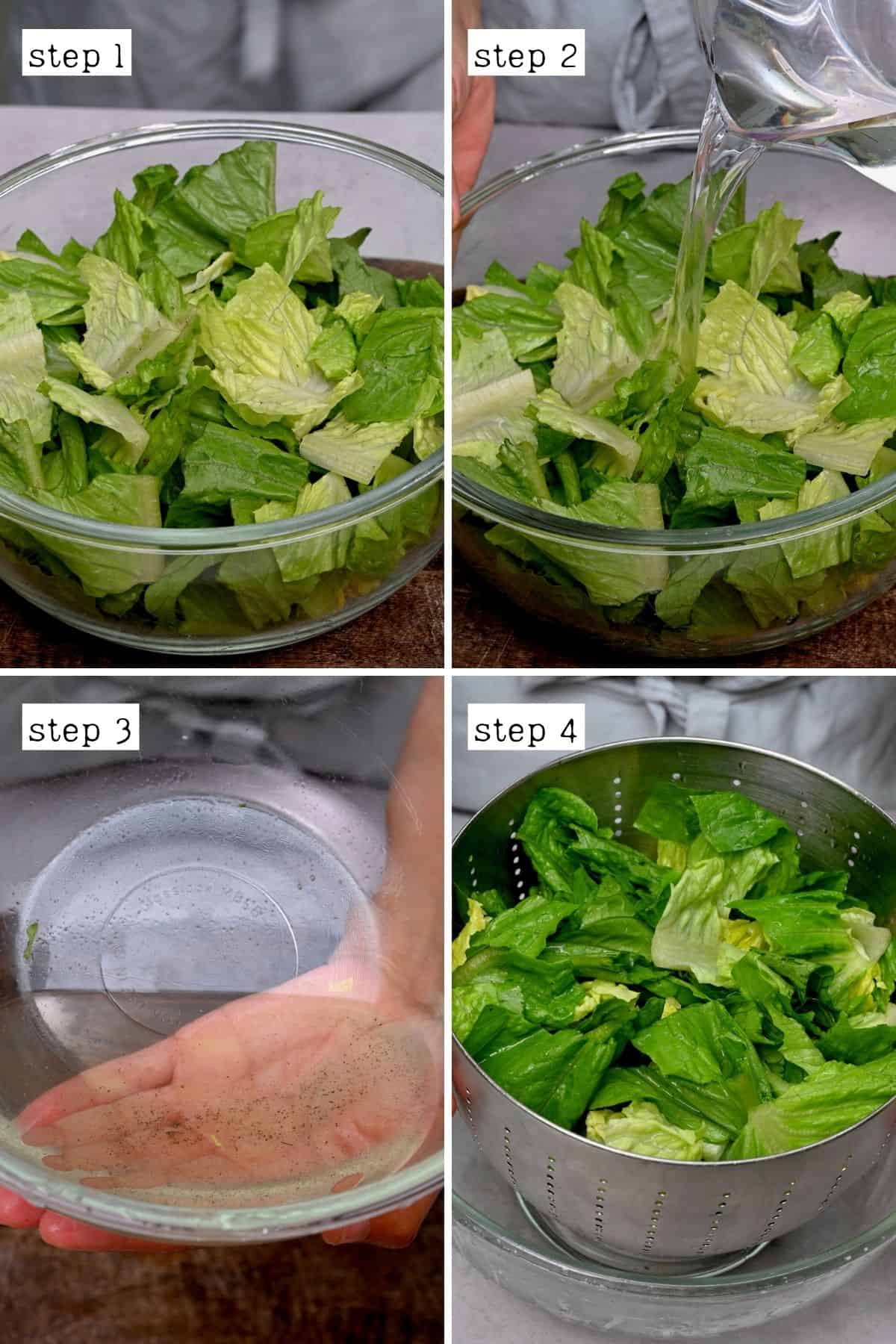
Romaine lettuce storage: washed or unwashed, how to keep it fresh?
It’s important to first choose the best head of romaine in the supermarket, looking for a tight head with firm leaves (not limp or dull!).
Option 1: How to store a whole head: Upon returning from the supermarket, it’s best to wrap the lettuce in paper towels. Then, place it in the crisper drawer of the refrigerator. Ensure it’s not overly crowded or alongside lots of ethylene-producing vegetables/fruits. This way, it should last 7-10 days.
Option 2: How to store leaf-by-leaf or chopped lettuce: Wash the leaves and dry them very well. Then you have two choice of how to store them. Put the leaves in a Ziplock bag OR chop them and seal them in an airtights container. For extra crunch, slip in paper towels between the leaves. This trick keeps your lettuce fresh for 3-5 days.
Chef’s Tip: If the lettuce is looking just a little wilted, rather than throwing it immediately out, submerge it in an ice-water bath for 5 minutes, then pat dry.
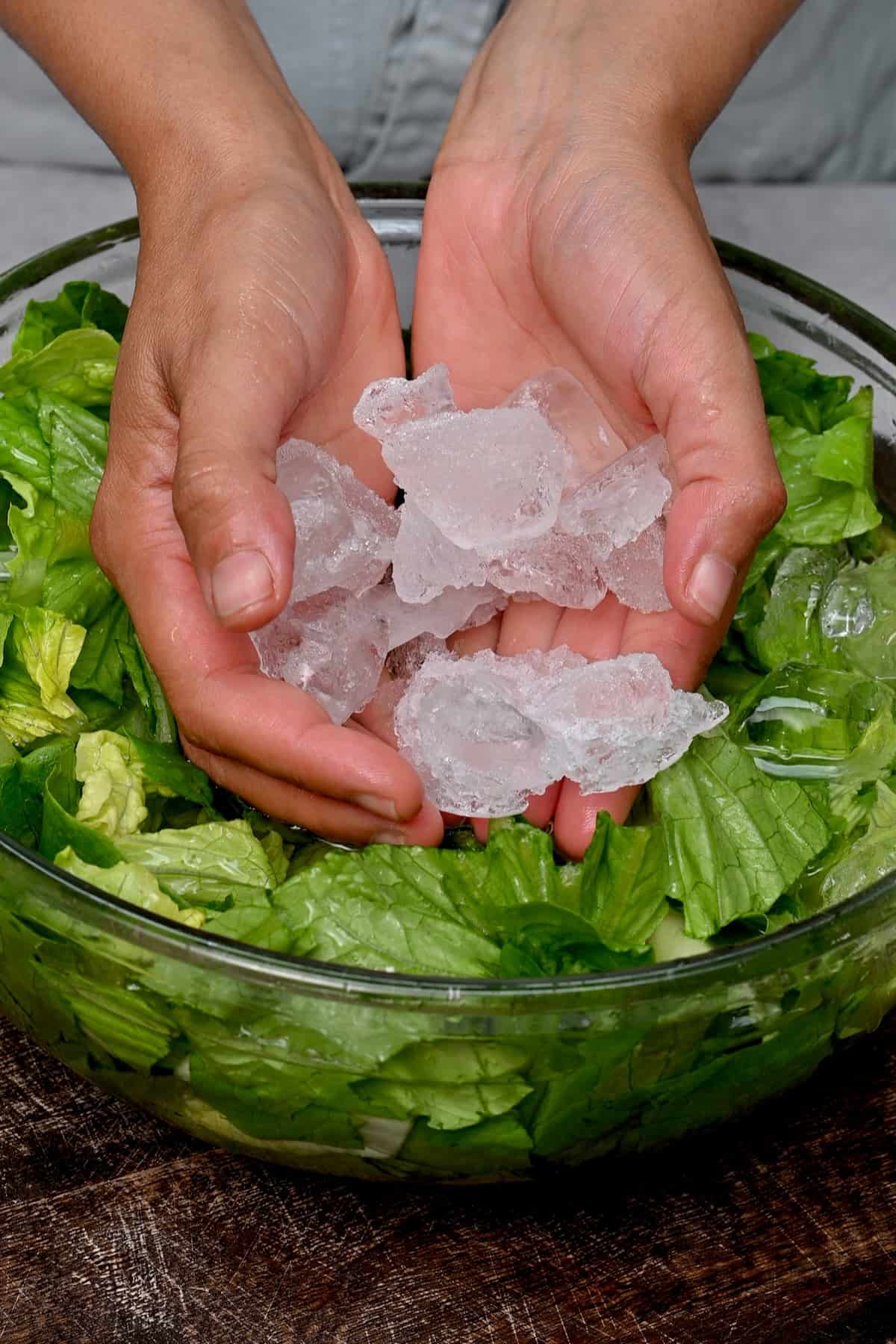
Can you freeze Romaine lettuce?
Surprisingly, romaine lettuce can be frozen for up to 6 months in an airtight bag. However, it’s important to note that the texture changes upon thawing.
Once thawed, the romaine is best when used as a spinach substitute. i.e., within casseroles, soups, smoothies, and other dishes where it isn’t a “key” element for texture/flavor. The taste will be subtle for a simple way to sneak in more greens.
What causes the pink color in Romaine lettuce?
As you store romaine lettuce, you might notice pinkish-brown spots on certain parts. This change in color is often the result of oxidation due to excess moisture, insufficient drying, or exposure to ethylene gas. It can also be from temperature changes.
As long as it’s not limp/soggy or looks spoiled in other ways, pink romaine should be absolutely fine to eat and usually won’t taste any different, though it might sometimes be a little more bitter.
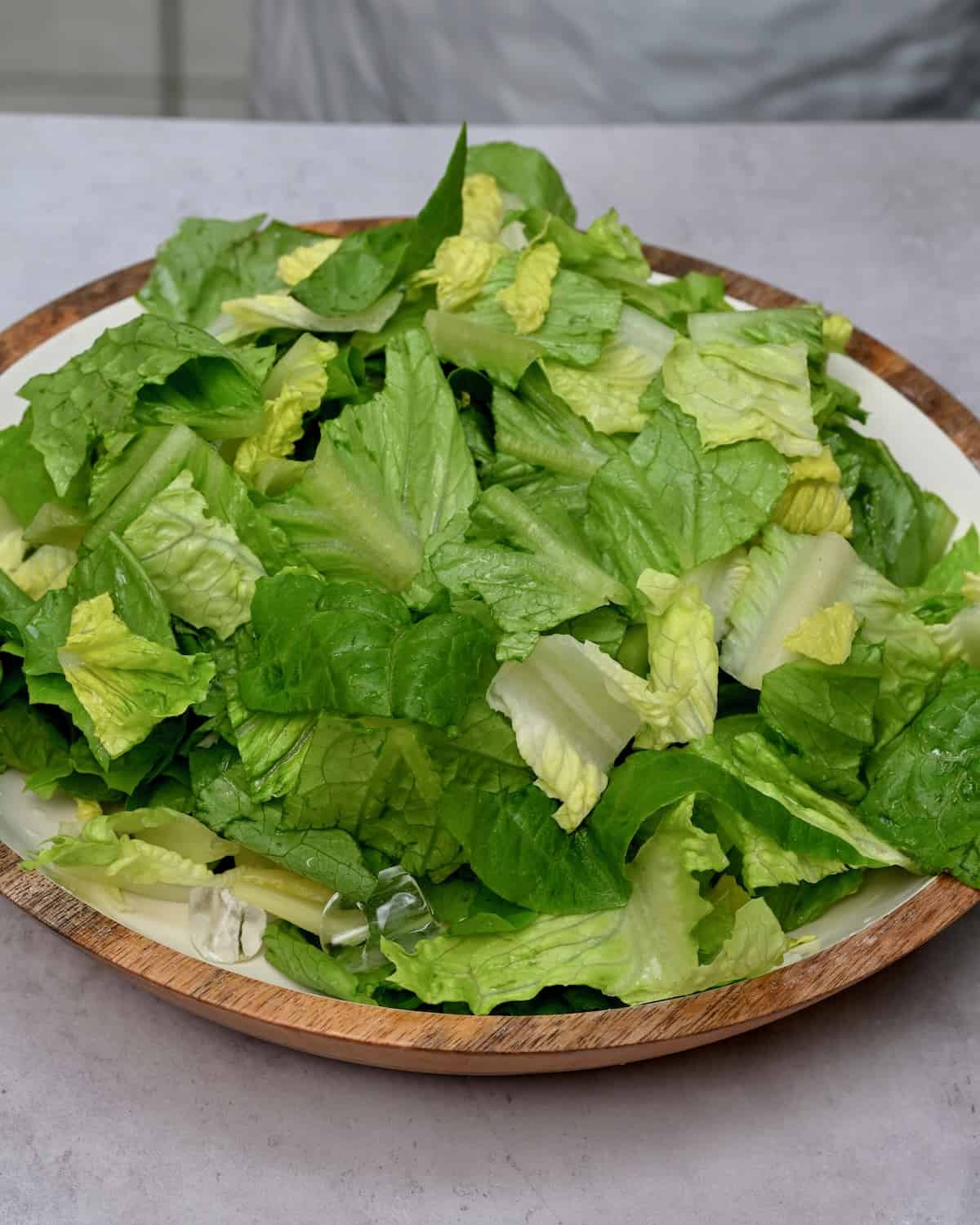
Popular dressing options to pair with Romaine lettuce
This crisp yet fairly neutral-tasting lettuce is a perfect base for any salad and hasn’t paired poorly with a single dressing I’ve thrown at it. Some of my favorite pairings are:
- Caesar dressing – which is rich, creamy, and tangy.
- Ranch dressing – also creamy and tangy, with extra herbiness.
- Tahini dressing – creamy, nutty, a little tangy, slightly bitter, ever so slightly sweet.
- Balsamic vinaigrette – light, sweet, and tangy.
- Roasted garlic dressing – sweet, zingy, and full of garlic flavor.
- Honey mustard dressing – sweet and tangy with a little heat.
- Asian sesame ginger dressing – super aromatic, sweet, tangy, and a little spicy.
- Japanese ginger dressing – a zingy, savory, slightly sweet, vibrant dressing.
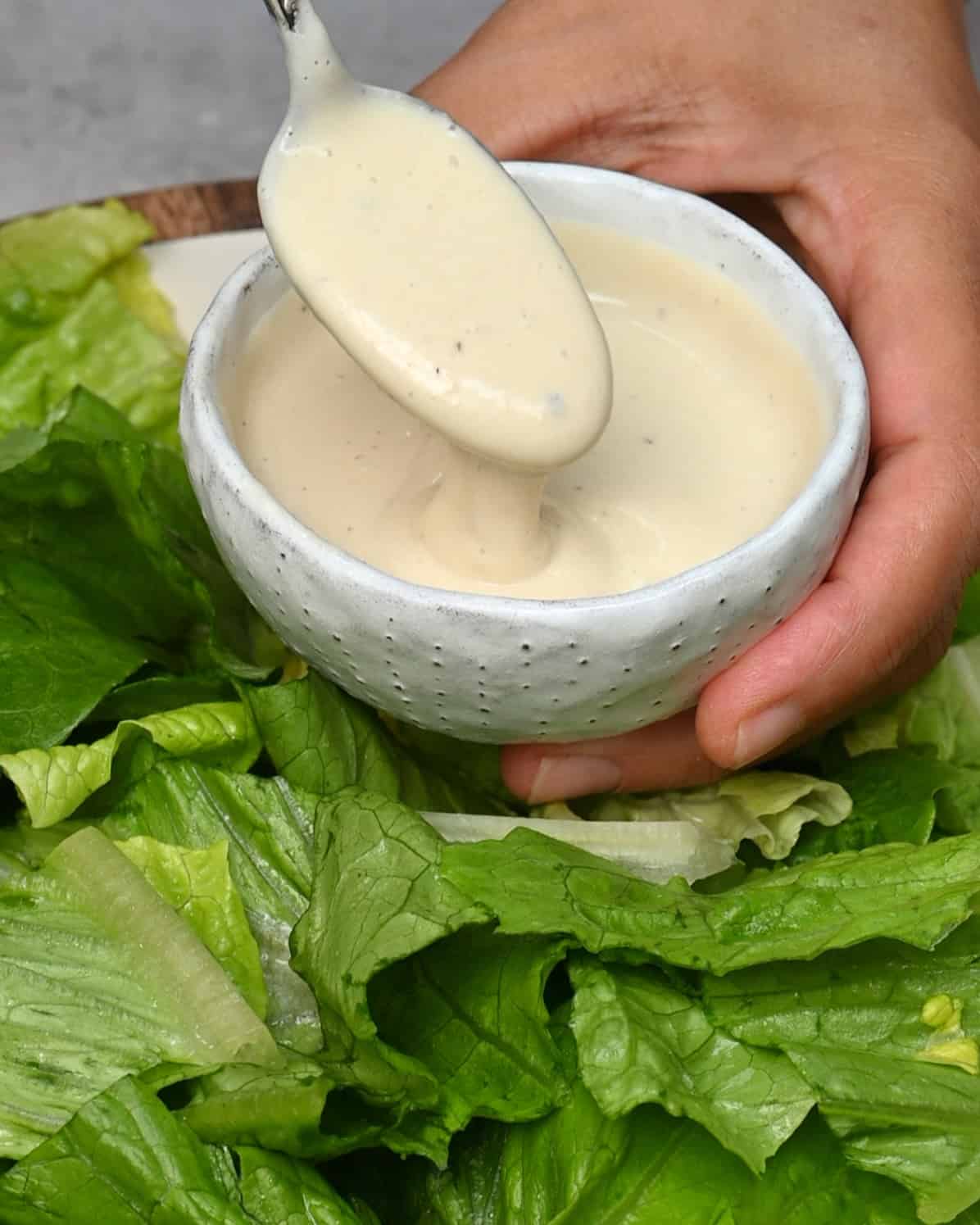
Best Romaine lettuce recipes
If you try any of the suggested romaine lettuce recipes, let me know how it goes in the comments below. I’d appreciate a recipe card rating and would love to see your recipe recreations – tag me on Instagram @Alphafoodie!
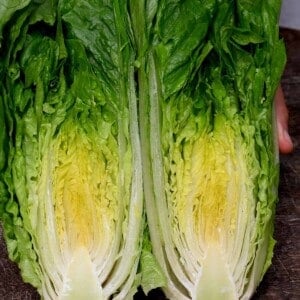
How to Cut Romaine Lettuce
Ingredients
- 1 romaine lettuce or as many as needed
Instructions
There are a couple of main ways to cut romaine lettuce:
- Simply use a knife to cut strips (across) from the top to the bottom of the lettuce head in your desired thickness.
OR
- Slice the romaine in half lengthwise. Turn the halves cut-side-up and remove the tough core using a V-shaped cut.
- Either slice across to create long strips OR slice down, lengthwise, through the lettuce to divide it into thirds or quarters first, then slice it across, as thin or thick as you’d like.
Then Wash the Lettuce
- Place it in a large bowl of water to swish around (any grit will fall to the bottom). Alternatively, place it in a colander under running water and swish.Then drain the lettuce well and pat dry (or use a salad spinner). This is the easiest way to wash between all the leaves, rather than attempting to clean between each leaf when it’s still an intact lettuce head.
Notes
Nutrition
Nutrition information is automatically calculated, so should only be used as an approximation.

